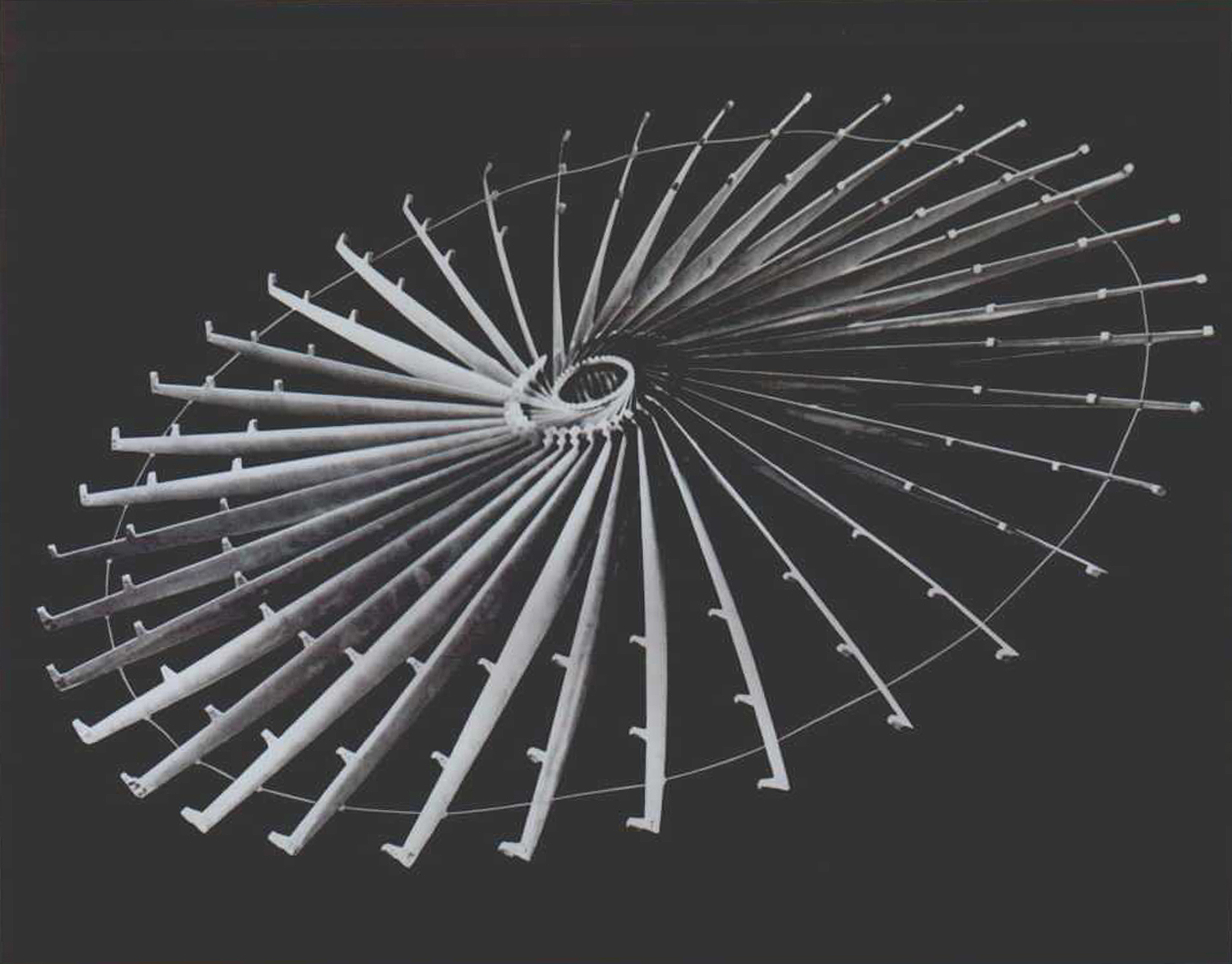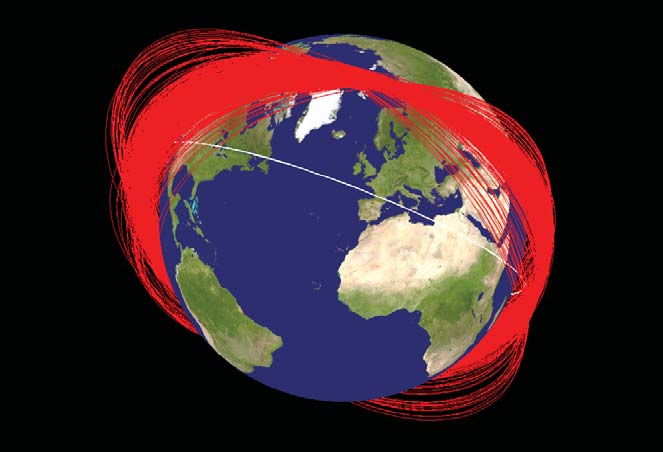|
Dong Neng-3
The Dong Neng-3 (; DN-3/KO09) is a Chinese ballistic missile defense system. Design The system is generally believed to be based on the DF-21 with elements of the HQ-9#Variants, SC-19 also incorporated. The interceptor is hit-to-kill. It can also be used as an anti-satellite weapon. The Dong Neng-3 is believed to fill much the same role as the SM-3 however it is believed to be much larger. History Testing of the DN-3 has primarily occurred at the Korla Missile Test Complex. A 2010 midcourse defense test was most likely a test of the DF-3. In 2015 the DN-3’s anti-satellite capabilities are believed to have been tested. In February 2018 the DN-3 was tested against a DF-21 based target in space. This test was reported to be a success by the PLA Daily. See also *Dong Neng-2 *FJ ABM *2007 Chinese anti-satellite missile test References {{Chinese missiles Anti-satellite missiles Anti-ballistic missiles of the People's Republic of China ... [...More Info...] [...Related Items...] OR: [Wikipedia] [Google] [Baidu] |
Ballistic Missile Defense
Missile defense is a system, weapon, or technology involved in the detection, tracking, interception, and also the destruction of attacking missiles. Conceived as a defense against nuclear weapon, nuclear-armed intercontinental ballistic missiles (ICBMs), its application has broadened to include shorter-ranged non-nuclear Tactical ballistic missile, tactical and Theater ballistic missile, theater missiles. missile defense systems by country#China, China, France, missile defense systems by country#India, India, Iran, missile defense systems by country#Israel, Israel, Italy, missile defense systems by country#Russia, Russia, missile defense systems by country#Taiwan, Taiwan, the United Kingdom and the missile defense systems by country#United States, United States have all developed such air defense systems. Missile defense categories Missile defense can be divided into categories based on various characteristics: type/range of missile intercepted, the trajectory phase wher ... [...More Info...] [...Related Items...] OR: [Wikipedia] [Google] [Baidu] |
DF-21
The Dongfeng 21 (DF-21; NATO reporting name CSS-5 - Dong-Feng () is a two-stage, solid-fuel, single-warhead medium-range ballistic missile (MRBM) developed by China's Changfeng Mechanics and Electronics Technology Academy. A part of the Dongfeng missile family, the DF-21's development started in the late 1960s, and it was completed around 1985–86, but not deployed until 1991. It was developed from the JL-1 submarine-launched missile, and is China's first solid-fuel land-based missile. The U.S. Department of Defense in 2008 estimated that China had 60-80 missiles and 60 launchers; approximately 10-11 missiles can be built annually. Originally developed as a strategic weapon, the DF-21's later variants were designed for both nuclear and conventional missions. It is thought to be able to carry a high explosive, submunition for tactical/theater-level missions, or a 300 kt nuclear warhead for strategic strikes. The latest variant, the DF-21D, was said to be the world ... [...More Info...] [...Related Items...] OR: [Wikipedia] [Google] [Baidu] |
HQ-9
The HQ-9 ( zh, s=红旗-9, t=紅旗-9, p=Hóng Qí-9, l=Red Banner-9; NATO reporting name: CH-SA-9.) is a long-range semi-active radar homing (SARH) surface-to-air missile (SAM) developed by the People's Republic of China. The naval variant is the HHQ-9 ( zh, s=海红旗-9, t=海紅旗-9, p=Hǎi Hóng Qí-9, l=Sea Red Banner-9). Description The HQ-9 is a derivative of the Russian S-300. Justin Bronk of the Royal United Services Institute describes the missile as a "hybrid design based on the Russian SA-20 but with radar, seeker head and C2 elements heavily influenced by American and Israeli technology." The missile uses track-via-missile (TVM) guidance combining inertial guidance, mid-course uplink, and terminal active radar. The TVM used on earlier missiles may have been developed from a United States MIM-104 Patriot missile purchased from Israel or Germany. According to a 2001 article from ''Defence International'', the HQ-9 is 6.8 m. long with a mass of nearly two tons. ... [...More Info...] [...Related Items...] OR: [Wikipedia] [Google] [Baidu] |
Hit-to-kill
A kinetic energy weapon (also known as kinetic weapon, kinetic energy warhead, kinetic warhead, kinetic projectile, kinetic kill vehicle) is a projectile weapon based solely on a projectile's kinetic energy to inflict damage to a target, instead of using any explosive, incendiary, chemical or radiological payload. All kinetic weapons work by attaining a high flight speedgenerally supersonic or even up to hypervelocityand collide with their targets, converting their kinetic energy and relative impulse into destructive shock waves, heat and cavitation. In kinetic weapons with unpowered flight, the muzzle velocity or launch velocity often determines the effective range and potential damage of the kinetic projectile. Kinetic weapons are the oldest and most common ranged weapons used in human history, with the projectiles varying from blunt projectiles such as rocks and round shots, pointed missiles such as arrows, bolts, darts, and javelins, to modern tapered high-velocit ... [...More Info...] [...Related Items...] OR: [Wikipedia] [Google] [Baidu] |
SM-3
The RIM-161 Standard Missile 3 (SM-3) is a ship-based surface-to-air missile used by the United States Navy to intercept ballistic missiles as a part of Aegis Ballistic Missile Defense System. Although primarily designed as an anti-ballistic missile, the SM-3 has also been employed in an anti-satellite capacity against a satellite at the lower end of low Earth orbit.Pentagon news briefing of February 14, 2008video : although no name for the satellite is given, the launch date of December 14, 2006 is stated The SM-3 is primarily used and tested by the and also operated by the |
Korla Missile Test Complex
The Korla Missile Test Complex is a People's Liberation Army (PLA) facility located outside of Korla, Xinjiang. Overview The Korla Missile Test Complex is located in Xinjiang province. According to the US Air Force the complex is likely connected to the People's Liberation Army Strategic Support Force (PLASSF). As of 2014 the base primarily consisted of two launch pads and a central support area. Testing of the Dong Neng-3 (DN-3) has primarily occurred at the Korla Missile Test Complex. Units PLA Unit 63618 is based at the Korla Missile Test Complex, the unit is tasked with ballistic missile defense. History The construction of the Korla Missile Test Complex began in 2009. In 2015 the DN-3’s anti-satellite capabilities are believed to have been tested with a launch from Korla. In 2016 the complex hosted a midcourse ballistic missile defense test. The PLA claimed that four successful tests had taken place at Korla. A 2017 launch from Korla is believed to have been a ... [...More Info...] [...Related Items...] OR: [Wikipedia] [Google] [Baidu] |
PLA Daily
The ''People's Liberation Army Daily'' (), or ''PLA Daily'' for short, is the official newspaper of the Chinese People's Liberation Army (PLA). Institutionally, the ''PLA Daily'' is the mouthpiece of and speaks for the Central Military Commission (China), Central Military Commission, and in that capacity speaks on the part of the PLA itself. Its editorial line hews closely to that found in the Communist Party of China, Chinese Communist Party's own official newspaper, ''People's Daily''. History The ''PLA Daily'' was established on 1 January 1956, under the aegis of the Chinese Communist Party's Central Military Commission as the Army's official newspaper. During the Cultural Revolution, the publications chief editor was purged in a political struggle and Marshal Lin Biao—at the time Mao Zedong's close comrade and Minister of National Defense—was named officer in charge of the paper in an acting capacity before becoming its editor in chief. The most important editorials of the ... [...More Info...] [...Related Items...] OR: [Wikipedia] [Google] [Baidu] |
Dong Neng-2
Dong Neng-2 () is an anti-satellite missile of the People's Liberation Army, developed in the early 2010s. It is designed as a low-Earth orbit interceptor which destroys orbiting satellites by high speed kinetic impact.William Lowther, 2012-10-18China to test new anti-satellite weapon: report Taipei Times See also *2007 Chinese anti-satellite missile test On 11 January 2007, China conducted an anti-satellite missile test. A Chinese weather satellite—the FY-1C (COSPAR 1999-025A) polar orbit satellite of the Fengyun series, at an altitude of , with a mass of —was destroyed by a kinetic kill ... References Anti-satellite missiles Anti-ballistic missiles of the People's Republic of China Military equipment introduced in the 2010s {{China-mil-stub ... [...More Info...] [...Related Items...] OR: [Wikipedia] [Google] [Baidu] |
FJ ABM
Project 640 was a missile defense development programme of the People's Republic of China that started in 1964. The programme pursued processes and technologies related to command and control, sensors, and weapons - including anti-ballistic missiles (ABM), lasers, and anti-satellite satellites. The goal of deploying or testing a complete system in the mid-1970s was unrealistic. Technical challenges, economic constraints and competing programmes slowed progress in the 1970s. Project 640 formally ended in 1982 without a system being developed. Some areas of research, including anti-satellite weapons and lasers, continued under 863 Program which started in the late-1980s. History In late-1963 and early-1964, Mao Zedong received reports on the use of missiles and lasers for missile defense. Mao voiced his approval for missile defence research in the "640" directive in February 1964; this was referenced by the project as 640. A high-level technical meeting in March 1964 chose ABMs as ... [...More Info...] [...Related Items...] OR: [Wikipedia] [Google] [Baidu] |
2007 Chinese Anti-satellite Missile Test
On 11 January 2007, China conducted an anti-satellite missile test. A Chinese weather satellite—the FY-1C (COSPAR 1999-025A) polar orbit satellite of the Fengyun series, at an altitude of , with a mass of —was destroyed by a kinetic kill vehicle traveling with a speed of in the opposite direction (see '' Head-on engagement''). It was launched with a multistage solid-fuel missile from Xichang Satellite Launch Center or nearby. '' Aviation Week & Space Technology'' magazine first reported the test on 17 January 2007. The report was confirmed on 18 January 2007 by a United States National Security Council (NSC) spokesperson.BBC News (2007)Concern over China's missile test Retrieved 20 January 2007. The Chinese government did not publicly acknowledge that the test had occurred until 23 January 2007 when the Chinese Foreign Ministry issued a statement confirming the test. China claims it formally notified the US, Japan and other countries about the test in advance. It wa ... [...More Info...] [...Related Items...] OR: [Wikipedia] [Google] [Baidu] |
Anti-satellite Missiles
Anti-satellite weapons (ASAT) are space weapons designed to incapacitate or destroy satellites for strategic or tactical purposes. Although no ASAT system has been utilized in warfare, a few countries (China, India, Russia, and the United States) have successfully shot down their own satellites to demonstrate their ASAT capabilities in a show of force. ASATs have also been used to remove decommissioned satellites. ASAT roles include: defensive measures against an adversary's space-based and nuclear weapons, a force multiplier for a nuclear first strike, a countermeasure against an adversary's anti-ballistic missile defense (ABM), an asymmetric counter to a technologically superior adversary, and a counter-value weapon. Use of ASATs generates space debris, which can collide with other satellites and generate more space debris. A cascading multiplication of space debris could cause Earth to suffer from Kessler syndrome. History The first anti-satellite technologies were dev ... [...More Info...] [...Related Items...] OR: [Wikipedia] [Google] [Baidu] |





